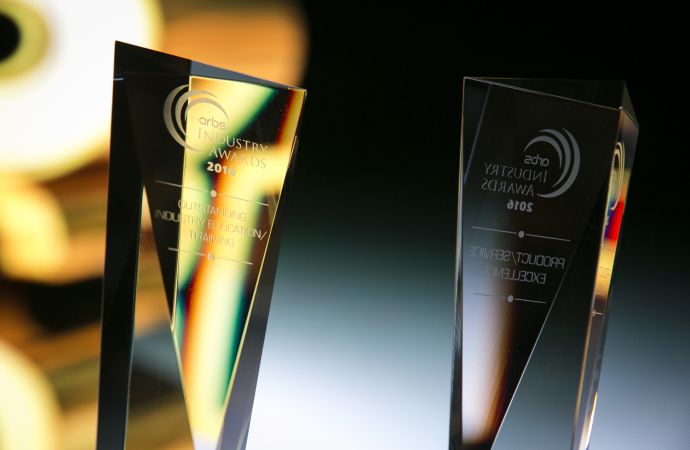The U.S. Environmental Protection Agency has started the process for granting federal approval for HCR-188c, a hydrocarbon blend developed by a former Hawaiian auto mechanic, in white goods. The refrigerant, suitable for home appliances and air-conditioners, is safe, cheaper and more energy-efficient than HCFCs and HFCs.

Hydrocarbons (HC) have taken another step on their way to be accepted as a safe and highly efficient replacement for ozone-depleting and high global warming substances in the U.S. - one of the last remaining world markets where the natural refrigerants are still being banned in many applications. In a 12 December 2008 letter, the Stratospheric Protection Division of the U.S. Environmental Protection Agency (EPA) thus expressed its intent to list HCR-188c, made up of hydrocarbons, under its SNAP (Significant New Alternative Policy) for “white goods”, including household refrigerators and freezers, as well as residential and light-commercial air-conditioning window units. The move came some months after Richard Maruya, its inventor, was honored with the 2008 Environmental Achievement Award from EPA’s region IX office for his “unwavering commitment to achieve this environmentally friendly product.”
The hydrocarbon blend HCR-188c is a precise mixture of ethane, propane, isobutane, normal butane and other naturally occurring compounds with zero ozone-depleting and very low global warming potential. The homemade formula was developed by Maruya, a former auto mechanic from Kaneohe, Hawaii, who spent 15 years developing it in a small lab in his garage. After more than four years since the first application, the public authorities followed Maruya’s reasoning and extensive independent test results that had found HCR-188c to be safe and environmentally benign.
Hydrocarbons: Cheaper, safer, more efficient
Appliances using HCR-188c only require one quarter of the usual amount of refrigerant, or about ounce for a household refrigerator, thereby reducing the danger from fires and leaks to an absolute minimum. According to the inventor, even with a massive leak in the kitchen and an open flame on a propane stove the substance would not ignite.
Furthermore, independent tests have found that refrigerator-freezers running with the HC blend would require only 68% of the total power necessary for appliances operating with existing refrigerants. With only 20 cents per half-ounce compared with 62 cents for an equivalent 2-ounce charge of commonly used chemicals, the HC refrigerant would also be much more cost-efficient.
Global environmental group Greenpeace, which has been working to promote hydrocarbon refrigerants since the 1990s, hailed the invention and determination of Maruya in the face of the lengthy regulatory process. An approval of HCR-188c is likely to facilitate an industry-wide transition towards hydrocarbons already started late last year with the request from GE and Ben&Jerry’s to use the natural refrigerants in refrigerators and ice cream freezers in the U.S. Appliances with his refrigerant could reach consumers by 2010 latest, Maruya hopes.
He will now work with the EP to get hydrocarbons approved for use in commercial freezers and air-conditioners, beverage vending machines, and in automobile air-conditioning systems.
The hydrocarbon blend HCR-188c is a precise mixture of ethane, propane, isobutane, normal butane and other naturally occurring compounds with zero ozone-depleting and very low global warming potential. The homemade formula was developed by Maruya, a former auto mechanic from Kaneohe, Hawaii, who spent 15 years developing it in a small lab in his garage. After more than four years since the first application, the public authorities followed Maruya’s reasoning and extensive independent test results that had found HCR-188c to be safe and environmentally benign.
Hydrocarbons: Cheaper, safer, more efficient
Appliances using HCR-188c only require one quarter of the usual amount of refrigerant, or about ounce for a household refrigerator, thereby reducing the danger from fires and leaks to an absolute minimum. According to the inventor, even with a massive leak in the kitchen and an open flame on a propane stove the substance would not ignite.
Furthermore, independent tests have found that refrigerator-freezers running with the HC blend would require only 68% of the total power necessary for appliances operating with existing refrigerants. With only 20 cents per half-ounce compared with 62 cents for an equivalent 2-ounce charge of commonly used chemicals, the HC refrigerant would also be much more cost-efficient.
Global environmental group Greenpeace, which has been working to promote hydrocarbon refrigerants since the 1990s, hailed the invention and determination of Maruya in the face of the lengthy regulatory process. An approval of HCR-188c is likely to facilitate an industry-wide transition towards hydrocarbons already started late last year with the request from GE and Ben&Jerry’s to use the natural refrigerants in refrigerators and ice cream freezers in the U.S. Appliances with his refrigerant could reach consumers by 2010 latest, Maruya hopes.
He will now work with the EP to get hydrocarbons approved for use in commercial freezers and air-conditioners, beverage vending machines, and in automobile air-conditioning systems.
MORE INFORMATION
Related stories





